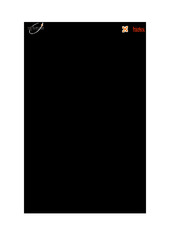Terapias neoadjuvante e adjuvante na excisão cirúrgica direta versus Kelóide Fillet Flap: terapia fotodinâmica injetável como uma promissora opção
Abstract
Introduction: Keloid and hypertrophic scars are characterized by abnormal responses to the healing process. They present intense production and deposition of collagen and glycoproteins in the dermis, with consequent development of a pathological scar. When carrying out a review of the literature, there is no consensus on which method is best for its management and/or treatment and there are no studies that consider the volume of lesions for the analyzed outcomes, as well as, to date, there is no in the literature, studies using photodynamic therapy (PDT) with injectable methyl aminolevulinate (M-ALA) for the treatment of atrial keloid. Objectives: To compare the keloid resection technique with epidermis and dermis preservation - Keloid Fillet Flap (KFF), with the standard surgical treatment by primary closure, using the standard treatment protocol: neoadjuvant triamcinolone infiltration + surgery + adjuvant beta therapy , proposing the neoadjuvant and adjuvant use of photodynamic therapy (PDT) with M-ALA 40% as a promising alternative to the treatment of auricular keloids. Methods: The study design, in its first part, was prospective and randomized in a single center with patients who had keloid in the auricular region. All participating patients were randomly divided into two groups: skin flap (CR) (n = 36 patients); and the KFF group (n = 37 patients). In both groups, neoadjuvant infiltration treatment with triamcinolone 20 mg/ml was performed until the end of the clinical activity of the keloid. After the surgical procedure, 10 sessions of beta-therapy were followed up with adjuvant treatment. In its second part, a pilot study was carried out, following the protocol with injection of M-ALA perilesion and intralesion, at a concentration of 40%, with saline solution at 0.9% as diluent, incubation of 90 min, followed by lighting with the LINCE® device (MMOptics, São Carlos-SP) parameterized with a wavelength of 630nm, 125mW/cm², providing 150J/cm² of energy, performing the application for 20 min. One week later, adjuvant PDT with 20% M-ALA in topical cream was performed, whether or not preceded by surgical resection of the mass. Results: The present study involved 73 patients, 37 from the KFF group and 36 from the CR group. After using scar measurement scales to define the recurrence rate, our study showed a recurrence rate of the total sample of 62%, with the KFF group presenting a rate of 76% and the RC group presenting a rate of 40% (p>0,05). In the KFF group, the mean volume of recurrent lesions was 56 cm³, versus 13.25 cm³ in those that did not recur (p<0,05). In the CR group, the mean volume was 57 cm³ in recurrent lesions and 1.6 cm³ in non-recurrent lesions (p<0,05). In the pilot project, the cases presented volumes of 0.08 cm³ and 1.87 cm³, with no recurrences in three months of follow-up. The volumes needed to maintain the proportion between the amount of M-ALA and the volume of the lesion were determined, standardizing the concentration of M-ALA at 40%, regardless of the volume of the lesion. Conclusion: Current auricular keloid treatment protocols still have high rates of recurrence, which are unacceptable because of the discomfort and aesthetic changes they can cause. There is an unequivocal relationship between the initial volume of lesions and the rate of recurrence, with lesions with volumes above 50 cm³ showing the highest rates. The pilot project developed was able to determine the best concentration of injectable M-ALA, always maintaining the proportion with the volume of the lesion, defined the incubation time after application, optimizing it in the meantime to only 90 min and allowed the visualization of the indication of treatment with PDT based on the volume of injuries, which will allow the creation of new studies already based on the pilot data.
Collections
The following license files are associated with this item:

